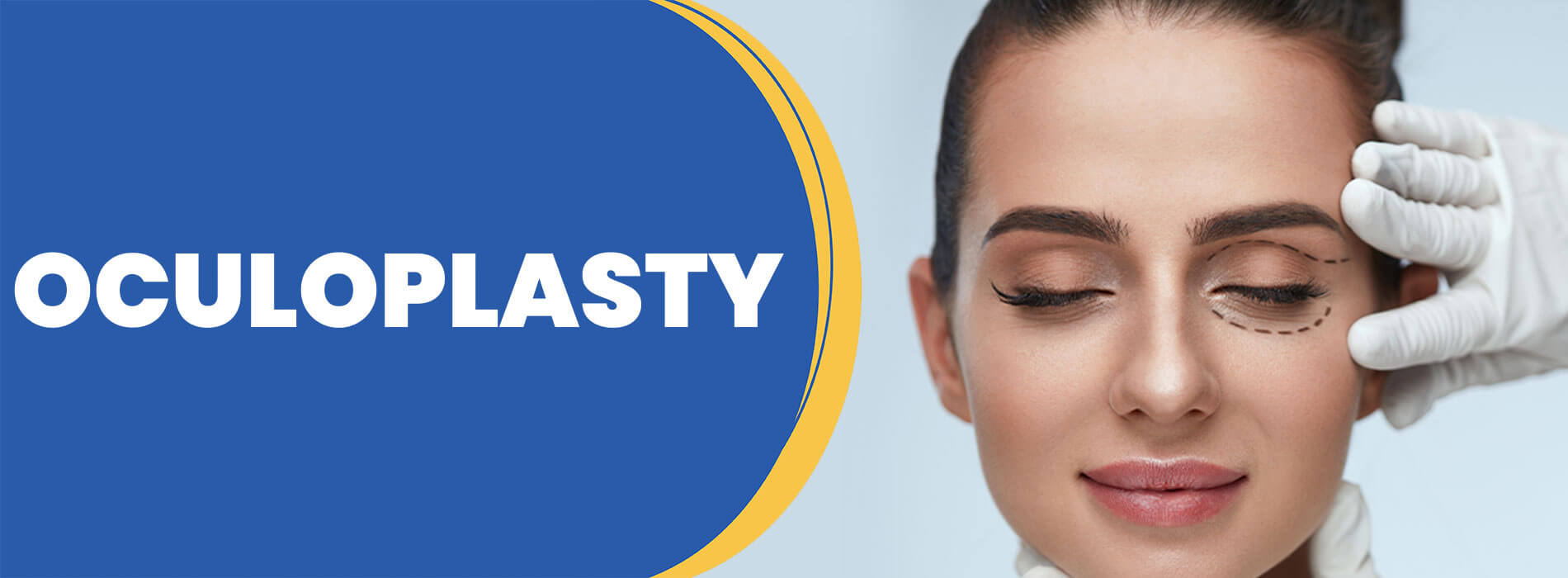
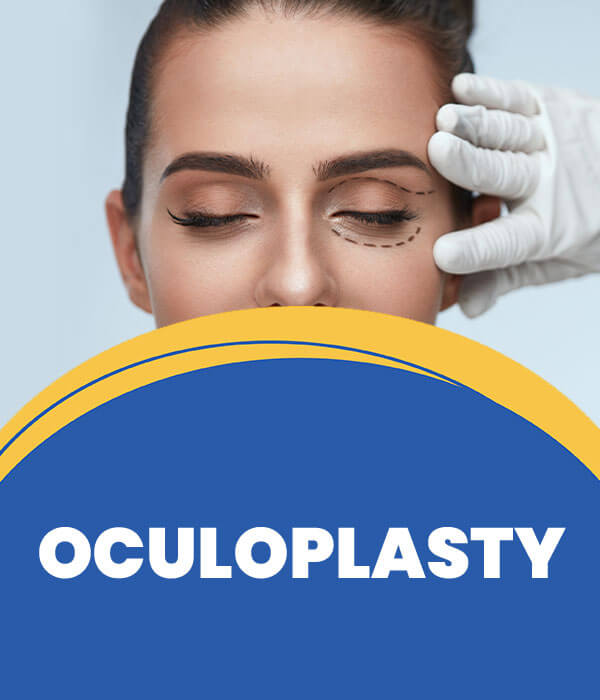
Oculoplasty
Transforming Eye Health and Aesthetics | Best Advanced Treatment for Oculoplasty in Andheri, Mumbai
As we age, changes in the delicate tissues around our eyes are often among the first noticeable signs. Drooping eyelids, excess skin, and other issues can give the face a tired, aged appearance. Oculoplasty, a specialized field of ophthalmology, focuses on surgical procedures that address both cosmetic and functional concerns of the eyes and eyelids. At Ashu Laser Vision and Ashu Eye Hospital, we provide the best advanced oculoplastic treatments in Andheri, Mumbai, using the latest techniques to rejuvenate and restore the natural appearance and function of the eyes.
What is Oculoplasty?
Oculoplasty is a branch of surgery that deals with correcting deformities or cosmetic issues around the eyes and eyelids. It involves both cosmetic enhancements and functional improvements, such as treating conditions like droopy eyelids (ptosis), sagging skin, and eyelid malposition. Oculoplastic surgery can also help with trauma-related issues, orbital fractures, and tumors within the eye socket.
Key Oculoplastic Procedures Offered:

Blepharoplasty (Eyelid Surgery): Procedure, Types, and Recovery
Blepharoplasty, commonly referred to as eyelid surgery, is a cosmetic and sometimes functional procedure that improves the appearance of the upper and lower eyelids. Whether for aesthetic enhancement or to restore vision affected by droopy eyelids, upper and lower blepharoplasty are among the most popular facial surgeries performed worldwide.
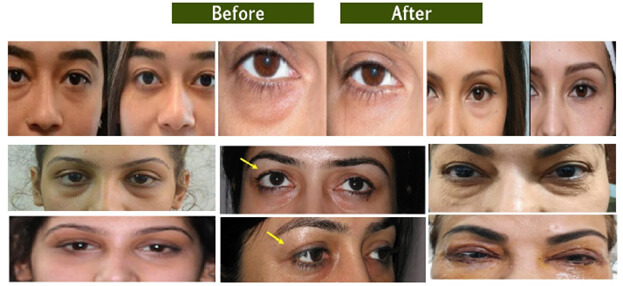
What Is Blepharoplasty?
Blepharoplasty involves the removal or repositioning of excess skin, fat, and sometimes muscle from the eyelids. It’s performed for both cosmetic and medical reasons and can dramatically rejuvenate the eye area.
Two Main Types:
- Upper Blepharoplasty – focuses on the upper eyelids
- Lower Blepharoplasty – targets the area beneath the eyes
Upper Blepharoplasty (Eyelid Surgery)
Upper blepharoplasty is designed to remove excess skin, fat, or muscle from the upper eyelids, which may cause a hooded, tired appearance or obstruct vision.
Common Reasons for Upper Eyelid Surgery:
- Droopy or sagging eyelid skin
- Impaired vision due to overhanging skin
- Aesthetic improvement for aging eyes
Procedure Overview:
- Incision made along the natural crease of the eyelid
- Excess skin and fat removed
- Skin closed with fine sutures
- Often performed under local anesthesia
Lower Blepharoplasty (Eyelid Surgery)
Lower blepharoplasty addresses the under-eye area, targeting puffiness, bags, and fine wrinkles caused by fat deposits or skin laxity.
Common Reasons for Lower Eyelid Surgery:
- Under-eye bags and puffiness
- Loose or sagging lower eyelid skin
- Tired or aged appearance
Procedure Overview:
- Incision made just below the lash line or inside the lower eyelid (transconjunctival approach)
- Fat is repositioned or removed
- Skin is tightened and smoothed
- May be combined with laser resurfacing for skin tightening
Benefits of Blepharoplasty (Both Upper and Lower)
- More youthful and refreshed eye appearance
- Improved peripheral vision (for upper blepharoplasty)
- Reduction in puffiness and under-eye bags
- Boost in confidence and facial aesthetics
- Long-lasting, natural-looking result
Recovery After Upper and Lower Eyelid Surgery
Most patients recover from blepharoplasty in 1–2 weeks, though final results appear gradually.
Typical Recovery Timeline:
- Swelling & bruising: 5–10 days
- Stitches removed: 5–7 days
- Light activities: resume after 5–7 days
- Full healing: up to 4–6 weeks
Post-operative tips include using cold compresses, avoiding strenuous activity, and protecting eyes from sun exposure.
Risks and Considerations
While generally safe, blepharoplasty may involve risks such as:
- Dry or irritated eyes
- Temporary blurred vision
- Infection or bleeding
- Scarring or asymmetry
- Difficulty closing the eyes (rare)
Final Thoughts: Is Blepharoplasty Right for You?
If you’re concerned about sagging eyelids, puffiness under the eyes, or tired-looking eyes, blepharoplasty (upper or lower) may be the right solution. Consult with a board-certified plastic surgeon or oculoplastic specialist to determine which procedure suits your needs best.
Best Blepharoplasty Treatment
At Ashu Laser Vision, our team of skilled surgeons specializes in blepharoplasty using the most advanced techniques and best treatment for blepharoplasty in Mumbai India for to ensure minimal scarring and a natural, youthful outcome.
Ptosis Surgery (Drooping Eyelid Treatment): Causes, Procedure, and Recovery
Ptosis surgery, also known as drooping eyelid correction, is a specialized procedure to lift the upper eyelid when it sags abnormally—a condition called ptosis. This eyelid drooping may affect one or both eyes and can interfere with vision or create an aged, tired appearance. Surgical intervention helps restore eyelid function and enhance eye aesthetics.
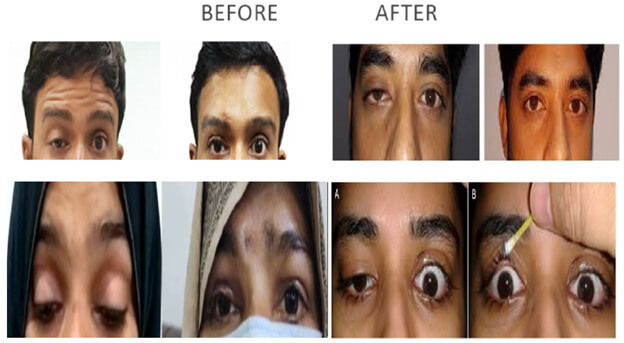
What Is Ptosis (Drooping Eyelid)?
Ptosis is the medical term for drooping of the upper eyelid, which can occur due to aging, congenital conditions, muscle weakness, or nerve damage. It may be mild, moderate, or severe, depending on how much the eyelid obstructs the pupil.
Common Types:
- Congenital ptosis – present at birth
- Acquired ptosis – develops later due to aging, trauma, or muscle dysfunction
Signs and Symptoms of Ptosis
- Drooping upper eyelid(s)
- Obstructed or reduced vision
- Eye fatigue or strain
- Head tilting or raised eyebrows to see better
- Uneven-looking eyes or asymmetry
Who Needs Ptosis Surgery?
Ptosis surgery is recommended when:
- The drooping eyelid interferes with vision
- There’s noticeable asymmetry in the eyelids
- The patient desires a cosmetic improvement
- Non-surgical treatments (e.g., ptosis crutches) are ineffective
Candidates should be in good health with realistic expectations.
Ptosis Surgery: How It Works
Ptosis surgery is typically performed by an oculoplastic surgeon and focuses on tightening or repositioning the levator muscle, which lifts the eyelid.
Surgical Techniques:
- External ptosis repair (levator advancement) – adjusts or shortens the levator muscle
- Frontalis sling surgery – uses a sling to connect the eyelid to the forehead muscle (often for congenital ptosis or poor muscle strength)
Procedure Facts:
- Outpatient procedure
- Takes 30–60 minutes per eye
- Performed under local or general anesthesia
Recovery After Ptosis Surgery
Recovery is relatively quick, though results may continue improving for several weeks.
Typical Recovery Timeline:
- Mild swelling/bruising: 1–2 weeks
- Stitches removed: 5–7 days
- Resume light activity: 5–10 days
- Full results: 4–6 weeks
Post-operative care includes using cold compresses, prescribed eye drops, and avoiding eye rubbing or straining.
Benefits of Ptosis Surgery
- Improved vision by clearing the visual field
- More symmetrical and youthful appearance
- Reduced eye fatigue and muscle strain
- Enhanced confidence and comfort
Risks and Considerations
Like all surgeries, ptosis repair carries risks, including:
- Overcorrection or undercorrection
- Infection or scarring
- Asymmetry
- Temporary dry eyes
- Need for revision surgery (in some cases)
Final Thoughts: Is Ptosis Surgery Right for You?
If you’re experiencing eyelid drooping that affects your vision or appearance, ptosis surgery offers a safe and effective solution. A consultation with a board-certified oculoplastic surgeon can determine the best treatment approach based on your eyelid structure and medical history.
Best Ptosis Treatment
Dr. Shahnawaz Kazi is a leading specialist in ptosis surgery with a track record of successful outcomes, offering both internal and external surgical approaches for optimal results. We provide the best Ptosis treatment in Mumbai India since last 15 years.
Entropion Surgery (Eyelid Turning Inward): Causes, Procedure & Recovery
Entropion surgery is a corrective procedure to fix a condition where the eyelid turns inward, causing the lashes and skin to rub against the cornea. This condition—known as entropion—can result in irritation, pain, tearing, and even vision loss if left untreated. Surgery offers a long-term solution for restoring eyelid alignment and protecting the eye surface.
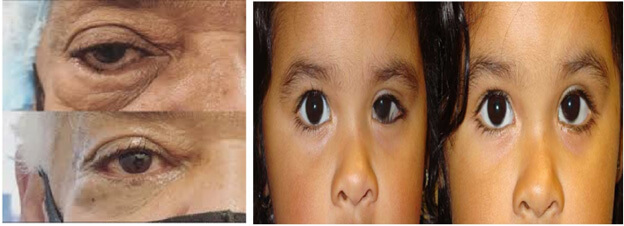
What Is Entropion?
Entropion is a medical condition in which the lower eyelid (and occasionally the upper eyelid) turns inward, causing the eyelashes and skin to press against the eye. This abnormal positioning leads to constant friction on the eye surface, increasing the risk of:
- Corneal abrasions
- Infections
- Scarring
- Chronic redness and discomfort
Common Causes of Entropion
- Aging (age-related muscle weakening)
- Previous eye surgeries or trauma
- Scarring of the inner eyelid (from burns, infections)
- Inflammatory eye conditions (e.g., trachoma)
- Congenital entropion (present at birth)
Symptoms of Entropion
- Persistent eye irritation and redness
- Excessive tearing (epiphora)
- Sensation of something in the eye (foreign body feeling)
- Blurred vision
- Light sensitivity (photophobia)
- Eye infections or corneal damage in advanced cases
Who Needs Entropion Surgery?
Surgery is typically recommended when:
- Eyelid turning inward causes ongoing eye irritation or damage
- Artificial tears or temporary fixes (e.g., tape or Botox) are ineffective
- There’s risk to the cornea or vision
Most common in older adults, entropion repair is crucial for preventing long-term complications.
Entropion Surgery Procedure
Entropion correction surgery aims to tighten or reposition the eyelid and surrounding muscles. It’s an outpatient procedure typically performed under local anesthesia.
Surgical Techniques:
- Lateral tarsal strip procedure – tightens the outer corner of the eyelid
- Everting sutures – rotate the eyelid outward with strategically placed stitches
- Scar excision or skin grafting – for cicatricial (scar-related) entropion
Recovery After Entropion Surgery
Most patients experience quick recovery with minimal discomfort.
What to Expect:
- Mild swelling or bruising: 5–10 days
- Suture removal (if non-absorbable): 5–7 days
- Return to normal activities: within 1 week
- Use of antibiotic ointment and cold compresses post-op
- Full healing: within 2–4 weeks
Benefits of Entropion Surgery
- Stops eyelashes from rubbing the eye
- Relieves irritation, redness, and tearing
- Protects the cornea from damage
- Improves appearance and eyelid function
- Reduces risk of infection or vision loss
Risks and Side Effects
As with any procedure, entropion surgery has potential risks, including:
- Infection or bleeding
- Overcorrection (ectropion)
- Temporary swelling or discomfort
- Recurrence of entropion (rare with proper technique)
Conclusion: Do You Need Entropion Surgery?
If you suffer from persistent eye irritation, watering, or corneal discomfort caused by an inward-turning eyelid, entropion surgery can offer lasting relief and prevent serious eye damage. Speak with a board-certified oculoplastic surgeon or ophthalmologist to determine if you’re a candidate for this effective eyelid correction procedure.
Best Entropion Treatment
Our team at Ashu Laser Vision provides precise surgical solutions for entropion with a focus on patient comfort and long-term success.
Ectropion Surgery (Eyelid Turning Outward): Causes, Procedure, and Recovery
Ectropion surgery is a medical procedure that corrects outward turning of the eyelid, a condition known as ectropion. This condition exposes the inner eyelid and eye surface, leading to dryness, irritation, excessive tearing, and potential damage to the cornea. Ectropion most often affects the lower eyelid and can be corrected surgically to restore normal eyelid function and eye protection.
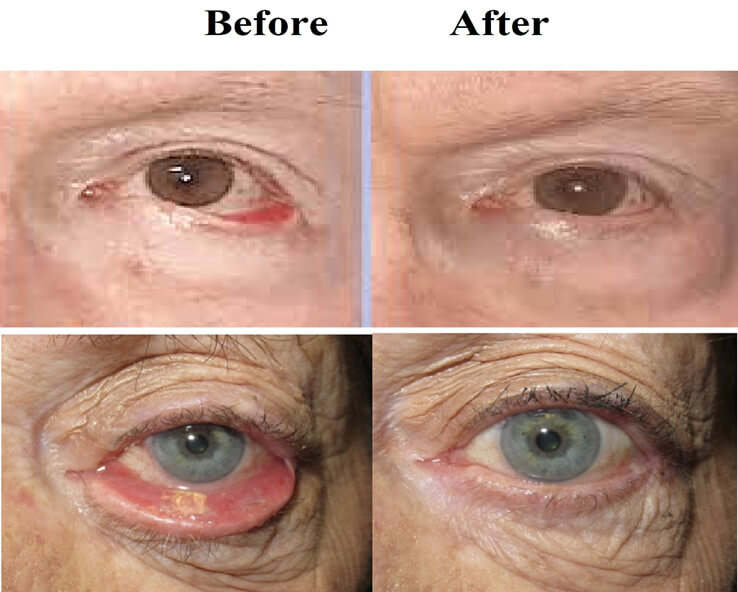
What Is Ectropion?
Ectropion is a condition where the lower eyelid pulls away from the eyeball, leaving the inner surface of the eyelid exposed. This causes the tear film to evaporate quickly, leading to chronic dry eye, irritation, and increased risk of corneal infections.
Common Causes of Ectropion
- Age-related tissue laxity (most common)
- Facial nerve paralysis (e.g., Bell’s palsy)
- Scarring from burns, trauma, or previous surgery
- Eyelid tumors or lesions
- Congenital ectropion (present at birth)
Symptoms of Ectropion
- Chronic eye redness and irritation
- Excessive tearing (epiphora)
- Dryness and burning
- Sensitivity to light (photophobia)
- Recurrent eye infections
- Visible drooping or sagging of the lower eyelid
When Is Ectropion Surgery Needed?
Surgery is recommended when:
- The eyelid is severely turned outward
- There is significant discomfort, tearing, or infection risk
- Non-surgical treatments like eye drops or ointments offer only temporary relief
Ectropion Surgery: How It Works
Ectropion surgery is performed by an oculoplastic surgeon or ophthalmologist. The goal is to tighten or reposition the eyelid to restore normal anatomy.
Common Surgical Techniques:
- Lateral tarsal strip procedure – tightens and reattaches the lower eyelid to the outer corner of the eye
- Full-thickness wedge excision – removes a small section of eyelid to tighten loose tissue
- Skin grafting – for cases with scar tissue or skin shortage (cicatricial ectropion)
Recovery After Ectropion Surgery
Recovery is generally quick and well-tolerated.
What to Expect:
- Mild bruising and swelling for 7–10 days
- Stitches typically removed in 5–7 days
- Use of antibiotic ointments and cold compresses
- Avoid rubbing or straining the eyes
- Return to normal activities within 1–2 weeks
Benefits of Ectropion Surgery
- Relief from eye irritation and dryness
- Normal tear distribution and eye moisture
- Improved appearance and eyelid position
- Reduced risk of corneal ulcers and infections
- Enhanced vision comfort and protection
Risks and Considerations
While complications are rare, potential risks of ectropion repair include:
- Infection or bleeding
- Scarring or asymmetry
- Overcorrection (entropion)
- Need for revision surgery (in complex cases)
Conclusion: Is Ectropion Surgery Right for You?
If you’re dealing with an outward-turning eyelid that causes tearing, irritation, or eye discomfort, ectropion surgery offers an effective, long-term solution. A consultation with a board-certified oculoplastic surgeon or eye specialist can confirm the best treatment plan for your condition.
Best Ectropion Treatment
At Ashu Laser Vision, we offer advanced ectropion surgery using minimally invasive techniques to ensure faster healing and minimal scarring.
Orbital Fracture Repair: Causes, Surgical Procedure & Recovery
Orbital fracture repair is a specialized surgical procedure used to correct broken bones around the eye socket. An orbital fracture, often caused by trauma such as sports injuries, car accidents, or physical assaults, can result in vision problems, eye misalignment, and facial deformities. Timely surgical intervention helps restore both function and appearance.
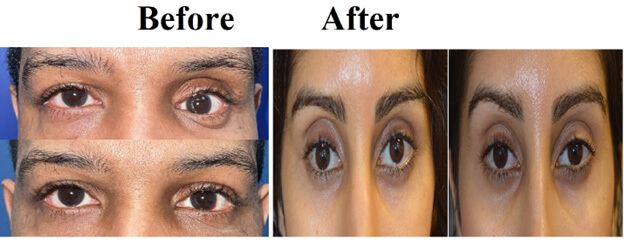
What Is an Orbital Fracture?
An orbital fracture is a break in one or more bones that make up the eye socket (orbit). This may involve the orbital floor, medial wall, roof, or lateral wall. Orbital fractures can lead to complications such as:
- Double vision (diplopia)
- Sunken eyeball (enophthalmos)
- Restricted eye movement
- Swelling and bruising
- Numbness of the cheek or upper lip (due to nerve damage)
Common Causes of Orbital Fractures
- Sports injuries (e.g., baseball, basketball)
- Motor vehicle accidents
- Falls
- Physical assaults or blunt trauma
- Workplace injuries
Symptoms of an Orbital Fracture
- Eye pain or swelling
- Bruising around the eye (periorbital ecchymosis)
- Double vision or blurred vision
- Restricted eye movement
- A sunken or misaligned eye
- Numbness in the upper cheek or lip
When Is Orbital Fracture Repair Needed?
Surgery may be recommended when:
- There is persistent double vision
- The eye appears sunken or misaligned
- Bone fragments threaten the eye or surrounding tissues
- There is risk of long-term deformity or function loss
Orbital Fracture Repair Surgery: What to Expect
Orbital fracture repair is performed by an oculoplastic surgeon, maxillofacial surgeon, or craniofacial specialist.
Procedure Overview:
- Anesthesia: General or local with sedation
- Incision: Hidden in natural eyelid creases or inside the eyelid
- Bone realignment or reconstruction: Involves repositioning fragments and placing implants or plates if needed
- Duration: 1 to 2 hours, depending on severity
Recovery After Orbital Fracture Surgery
Recovery varies depending on the complexity of the injury.
Typical Recovery Timeline:
- Swelling and bruising: Improves within 2 weeks
- Stitches removal: 5–7 days
- Vision improvement: Gradual, may take several weeks
- Avoid contact sports and strenuous activity for 4–6 weeks
Post-op care includes cold compresses, prescribed medications, and eye protection.
Benefits of Orbital Fracture Repair
- Restores normal eye alignment and vision
- Corrects facial symmetry and appearance
- Prevents long-term complications (e.g., muscle entrapment, nerve damage)
- Improves confidence and comfort
Risks and Considerations
While complications are rare, risks may include:
- Bleeding or infection
- Scarring (minimal with skilled surgical technique)
- Persistent double vision
- Implant shifting or exposure
- Need for revision surgery (rare)
Conclusion: Do You Need Orbital Fracture Repair?
If you’ve experienced facial trauma and are dealing with eye misalignment, double vision, or a sunken appearance, orbital fracture repair may be essential to restore normal function and appearance. Consult a board-certified oculoplastic or craniofacial surgeon as soon as possible for evaluation and treatment planning.
Best Orbital Fracture Repair
Our surgeons are highly experienced in orbital fracture repair, ensuring the best possible cosmetic and functional results.
Orbital Tumor Surgery: Diagnosis, Treatment, and Recovery
Orbital tumor surgery is a specialized procedure used to remove abnormal growths in the eye socket (orbit). These tumors can be benign or malignant, and may affect vision, eye movement, or facial symmetry. Early diagnosis and prompt surgical treatment are critical to preserve eye function, prevent complications, and improve outcomes.

What Is an Orbital Tumor?
An orbital tumor is a growth located within the bony eye socket that surrounds the eyeball, optic nerve, muscles, and blood vessels. Tumors may be:
- Benign (non-cancerous) – e.g., dermoid cysts, hemangiomas, meningiomas
- Malignant (cancerous) – e.g., lymphoma, sarcoma, metastatic lesions
Tumors may arise from within the orbit or spread from nearby areas such as the sinuses, brain, or skin.
Common Symptoms of Orbital Tumors
- Bulging eye (proptosis)
- Vision loss or changes
- Eye pain or pressure
- Double vision (diplopia)
- Restricted eye movement
- Swelling, drooping eyelid, or asymmetry
When Is Orbital Tumor Surgery Needed?
Surgery is often necessary if the tumor:
- Is malignant or rapidly growing
- Causes proptosis, vision changes, or nerve compression
- Fails to respond to medical treatments (e.g., radiation or chemotherapy)
- Is causing significant cosmetic or functional issues
Orbital Tumor Surgery Procedure
Orbital tumor removal is a delicate procedure performed by an oculoplastic surgeon, neurosurgeon, or head and neck specialist, depending on the tumor’s location and complexity.
Surgical Techniques:
- Anterior orbitotomy – for tumors in the front portion of the orbit (through the eyelid or conjunctiva)
- Lateral orbitotomy – for lateral orbital tumors, often with bone removal
- Transcranial or endoscopic approach – for deep or skull-base tumors
- Biopsy – may be done first to confirm tumor type before full removal
Anesthesia:
- Typically performed under general anesthesia
Diagnosis and Imaging Before Surgery
Before surgery, patients undergo detailed evaluation including:
- MRI and CT scans to assess tumor location and size
- Ultrasound imaging (for cystic or vascular tumors)
- Blood tests
- Orbital biopsy (if tumor type is unclear)
Recovery After Orbital Tumor Surgery
Recovery depends on the tumor type, location, and surgical approach.
Postoperative Care:
- Mild swelling or bruising: 1–2 weeks
- Pain is usually mild and managed with medications
- Stitches removed in 5–7 days (if external incisions used)
- Avoid heavy lifting or eye strain for several weeks
- Follow-up imaging may be required
Vision may take time to stabilize depending on optic nerve involvement.
Risks and Considerations
- Vision loss (rare, but possible if the optic nerve is involved)
- Bleeding or infection
- Double vision or eye movement issues
- Facial asymmetry
- Incomplete tumor removal or recurrence
Orbital Tumor Types Treated Surgically
- Cavernous hemangioma
- Optic nerve glioma or sheath meningioma
- Lymphoma (after biopsy and staging)
- Metastatic tumors
- Dermoid cysts and epidermoid tumors
- Lacrimal gland tumors
Conclusion: Is Orbital Tumor Surgery Right for You?
If you’re experiencing eye bulging, vision loss, or have been diagnosed with an orbital tumor, timely surgical intervention may be critical. Orbital tumor surgery offers the potential for full removal, relief of pressure symptoms, and preservation of vision and eye function. Always consult a board-certified oculoplastic or orbital surgeon to determine the safest and most effective treatment plan.
Best Orbital Tumor Treatment & Surgery
We specialize in the diagnosis and surgical removal of orbital tumors, providing comprehensive care with the latest imaging technologies and surgical techniques.
Lacrimal Duct Surgery (Tear Duct Obstruction Treatment): Symptoms, Procedure & Recovery
Lacrimal duct surgery, also known as tear duct obstruction treatment, is a medical procedure to restore the normal drainage of tears from the eye into the nasal cavity. When the tear drainage system is blocked, it leads to excessive tearing, recurrent infections, and chronic eye irritation. Surgical intervention, most commonly through dacryocystorhinostomy (DCR), is often necessary for long-term relief.
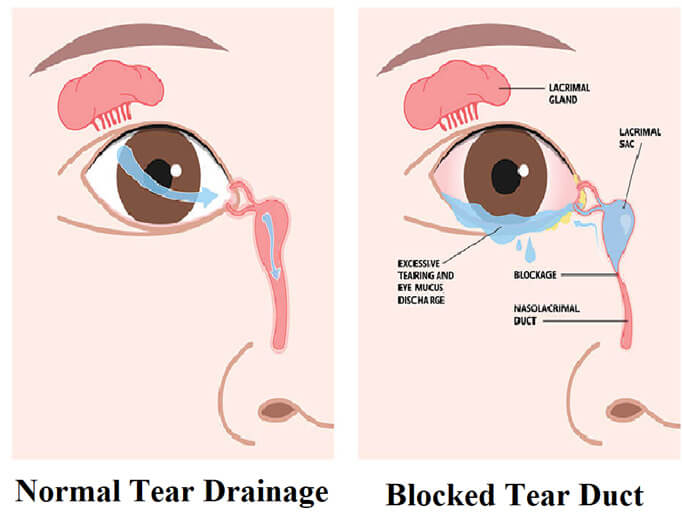
What Is Tear Duct Obstruction?
Tear duct obstruction occurs when the nasolacrimal duct, which drains tears from the eye into the nose, becomes partially or fully blocked. This condition can affect children (congenital) or adults (acquired) and often causes watery eyes and frequent eye infections.
Common Causes of Tear Duct Blockage
- Congenital blockage (present at birth)
- Aging-related narrowing of the tear duct
- Chronic sinus infections
- Facial trauma or nasal surgery
- Inflammatory conditions (e.g., sarcoidosis)
- Tumors or cysts in the lacrimal system
Symptoms of Tear Duct Obstruction
- Constant tearing (epiphora)
- Mucous discharge from the eye
- Recurrent eye infections
- Swelling and tenderness near the inner corner of the eye
- Blurry vision due to tear film buildup
When Is Lacrimal Duct Surgery Needed?
Surgery is recommended when:
- Non-surgical treatments (e.g., warm compresses, antibiotics) fail
- The tear duct is completely blocked
- The patient experiences recurrent infections
- There is a risk of dacryocystitis (infection of the lacrimal sac)
Types of Lacrimal Duct Surgery
Dacryocystorhinostomy (DCR)
The most common surgical procedure for adults with tear duct obstruction. It creates a new drainage passage between the lacrimal sac and the nasal cavity.
- External DCR – performed through a small incision near the nose
- Endoscopic DCR – done via the nasal passages, leaving no external scar
Probing and Irrigation
Used primarily in infants, this involves opening the duct using a thin metal probe.
Balloon Dacryoplasty
Minimally invasive method using a balloon catheter to open the blocked duct.
Lacrimal Duct Surgery Procedure: What to Expect
- Performed under local or general anesthesia
- Duration: 30 to 90 minutes, depending on the method
- Temporary stents or tubes may be placed to keep the new passage open
- Outpatient procedure in most cases
Recovery After Lacrimal Duct Surgery
Recovery is usually quick and well-tolerated.
Post-op Care:
- Mild bruising/swelling around the nose or eye for 1–2 weeks
- Nasal congestion or minor bleeding may occur
- Use antibiotic eye drops and saline rinses as prescribed
- Avoid blowing your nose or heavy lifting for several days
Follow-up:
- Stents (if placed) are usually removed after 4–6 weeks
Benefits of Lacrimal Duct Surgery
- Eliminates excessive tearing and discomfort
- Prevents recurrent infections
- Restores normal tear drainage
- Improves vision clarity
- Enhances facial comfort and aesthetics
Risks and Complications
Though rare, potential risks include:
- Bleeding or bruising
- Scarring (more common with external DCR)
- Failure to resolve tearing
- Infection or granulation tissue formation
- Need for revision surgery
Conclusion: Is Lacrimal Duct Surgery Right for You?
If you’re suffering from chronic watery eyes, tear duct infections, or discomfort due to tear overflow, lacrimal duct surgery may offer lasting relief. An evaluation by a board-certified oculoplastic or ophthalmic surgeon can determine the best surgical approach for your condition.
Best Tear Duct Treatment & Surgery: Relief for Watery Eyes & Blocked Tear Ducts
If you’re dealing with persistent watery eyes, frequent eye infections, or a blocked tear duct, you may be a candidate for the best tear duct treatment and surgery available today. Whether caused by age, infection, injury, or congenital issues, tear duct obstruction can be both uncomfortable and visually disruptive. Fortunately, modern treatments—including non-surgical options and advanced lacrimal duct surgeries—can restore normal tear drainage and provide lasting relief.
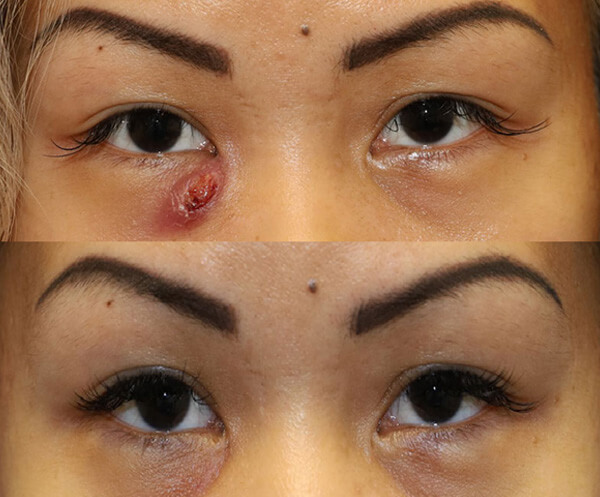
Understanding Tear Duct Obstruction
The tear duct system (also called the nasolacrimal drainage system) carries tears from the surface of the eye into the nasal cavity. When blocked, tears back up and overflow, leading to:
- Excessive tearing (epiphora)
- Eye irritation or redness
- Recurrent eye infections
- Discharge or crusting
- Blurred vision due to tear film buildup
Best Tear Duct Treatment Options
The best treatment for tear duct blockage depends on the underlying cause, severity, and age of the patient. Here’s a breakdown of non-surgical and surgical options:
Non-Surgical Tear Duct Treatments
- Warm Compresses & Massage
Gentle massage and heat help open partially blocked ducts, especially in infants. - Antibiotic Drops or Ointments
Used if an infection is present, such as dacryocystitis. - Flushing or Irrigation
A minor in-office procedure that clears the tear duct with saline under pressure.
Surgical Tear Duct Treatments
When conservative treatments fail, surgical intervention may be needed. The most effective procedures include:
Dacryocystorhinostomy (DCR Surgery)
The gold standard treatment for adults with a fully blocked tear duct.
- External DCR: A small incision near the nose allows direct access to the duct
- Endoscopic DCR: Performed through the nasal passages with no visible scarring
🟢 Success rate: 85–95%
🟢 Best for: Complete blockages, chronic infections, trauma-related obstruction
2. Tear Duct Probing (Infants & Young Children)
A quick and effective method for babies with congenital tear duct obstruction.
- Thin probe opens the blocked duct under brief anesthesia
- Often successful after just one procedure
3. Balloon Dacryoplasty
A minimally invasive procedure using a tiny balloon catheter to dilate the blocked duct.
- Ideal for partial obstructions or failed probing
- Performed in both children and selected adults
4. Lacrimal Stent Placement
Soft silicone tubes may be temporarily placed to keep the tear duct open after surgery or dilation.
- Typically removed after 4–12 weeks
- Helps prevent re-blockage
Recovery After Tear Duct Surgery
Most tear duct surgeries are outpatient procedures with quick recovery times.
What to Expect:
- Mild swelling or bruising around the eye or nose
- Temporary nasal congestion or bleeding (with endoscopic DCR)
- Use of antibiotic drops and nasal rinses
- Avoid heavy lifting or nose blowing for 1–2 weeks
- Return to daily activities within days
Benefits of the Best Tear Duct Treatments
- Stops excessive tearing and discomfort
- Reduces risk of eye infections
- Restores natural tear drainage
- Improves vision clarity and facial comfort
- Enhances cosmetic appearance in chronic cases
Conclusion: Find the Best Tear Duct Treatment for Your Needs
If you’re experiencing constant tearing, recurrent eye infections, or a blocked tear duct, it’s time to consider the best tear duct treatment or surgery for your condition. A consultation with an experienced oculoplastic surgeon or ophthalmologist can help determine the most effective solution—whether it’s a simple probe or advanced dacryocystorhinostomy (DCR).
Cosmetic Oculoplasty (Aesthetic Surgery for Eyelid and Surrounding Areas)
Cosmetic oculoplasty, also known as aesthetic eyelid surgery, focuses on enhancing the appearance of the eyelids, eye area, and surrounding facial structures. Performed by oculoplastic surgeons—specialists in both ophthalmology and plastic surgery—these procedures blend medical expertise with cosmetic artistry to achieve natural-looking, rejuvenated results.
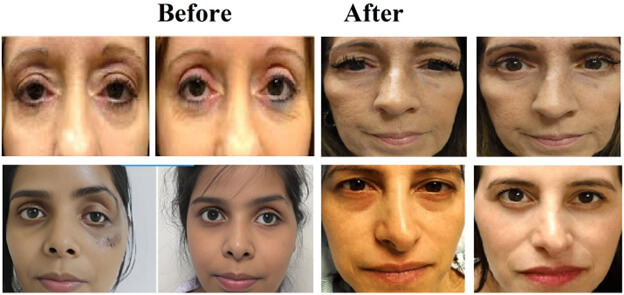
What Is Cosmetic Oculoplasty?
Cosmetic Oculoplasty refers to a range of surgical and non-surgical procedures designed to enhance the eye area by correcting:
- Droopy eyelids (ptosis)
- Puffy under-eye bags
- Wrinkles and fine lines
- Asymmetry or scarring
- Hollowness or volume loss
These procedures are tailored to each individual’s anatomy and aesthetic goals, ensuring subtle and natural enhancements that preserve eye function.
Who Performs Cosmetic Oculoplasty?
Oculoplastic surgeons are uniquely qualified to perform aesthetic procedures around the eyes. They have advanced training in ophthalmic microsurgery and facial aesthetics, offering both cosmetic enhancements and functional correction when needed.
Common Cosmetic Oculoplasty Procedures
Upper Blepharoplasty (Eyelid Lift)
Removes excess skin and fat from the upper eyelids to correct hooding and restore a more youthful, alert appearance.
Lower Blepharoplasty (Eye Bag Removal)
Targets under-eye puffiness and sagging by removing or repositioning fat, tightening skin, and smoothing the tear trough area.
Ptosis Correction (Droopy Eyelid Surgery)
Improves both vision and appearance by lifting eyelids that have dropped due to muscle weakness or aging.
Canthoplasty / Canthopexy
Recontours the outer corners of the eyes to create a more youthful or almond-shaped eye, often combined with blepharoplasty.
Fat Transfer / Fillers Around the Eyes
Minimally invasive options to address hollowness or volume loss in the upper cheeks, under-eyes, and temples.
Benefits of Cosmetic Oculoplasty
- Rejuvenates tired or aged eyes
- Restores natural eye shape and symmetry
- Improves self-confidence and facial harmony
- Can enhance peripheral vision (in functional cases)
- Minimal scarring with advanced techniques
Ideal Candidates for Aesthetic Eyelid Surgery
You may be a good candidate for cosmetic oculoplasty if you have:
- Excess eyelid skin or fat
- Puffiness or sagging around the eyes
- Asymmetry or scarring
- Droopy eyelids affecting appearance
- Desire for a more refreshed, rested look
What to Expect: Procedure & Recovery
Procedure Time: 30 minutes to 2 hours depending on complexity
Anesthesia: Local with sedation or general anesthesia
Recovery Timeline:
- Mild swelling/bruising for 7–14 days
- Return to work: ~7 days
- Full results visible in 4–6 weeks
Risks and Safety Considerations
Cosmetic Oculoplasty is considered very safe when performed by a qualified oculoplastic surgeon, but as with any procedure, risks may include:
- Temporary dry eyes or irritation
- Bruising and swelling
- Asymmetry or under-correction (rare)
- Infection or scarring (rare)
Conclusion: Transform Your Look with Cosmetic Oculoplasty
If you’re looking to refresh your appearance with subtle yet impactful improvements around the eyes, cosmetic oculoplasty offers a tailored solution. Whether you’re dealing with droopy eyelids, under-eye bags, or facial asymmetry, a skilled oculoplastic surgeon can deliver natural results that enhance your unique features. Schedule a consultation today to explore your options and see what aesthetic eye surgery can do for you.
Best Cosmetic Oculoplasty Clinic in Andheri West, Mumbai, India | Ashu Laser Vision & Ashu Eye Hospital
Looking for the best cosmetic Oculoplasty clinic in Andheri West, Mumbai? Ashu Laser Vision & Ashu Eye Hospital is your trusted destination for advanced aesthetic eyelid surgery and cosmetic eye treatments. With years of expertise in cosmetic Oculoplasty, our team of experienced oculoplastic surgeons provides personalized care tailored to enhance your natural beauty while preserving eye health.
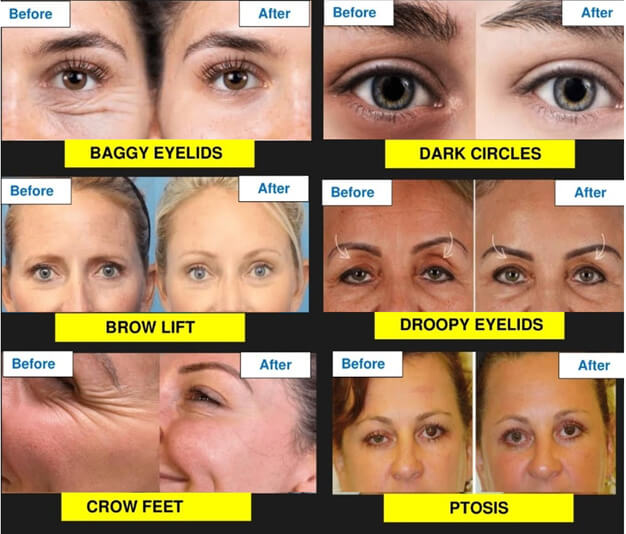
Why Choose Ashu Laser Vision & Ashu Eye Hospital for Cosmetic Oculoplasty?
- Expert Oculoplastic Surgeons: Skilled specialists trained in both ophthalmology and cosmetic surgery
- Advanced Technology: Latest surgical techniques including upper & lower blepharoplasty, ptosis repair, eye bag removal, and non-surgical fillers
- Comprehensive Eye Care: Combining aesthetics with functional correction for optimal results
- Patient-Centric Approach: Customized treatment plans with detailed consultations
- Trusted in Mumbai: Serving patients from Andheri West and all over Mumbai with top-rated care and excellent outcomes
Our Cosmetic Oculoplasty Services Include:
- Upper Blepharoplasty (Eyelid Lift)
- Lower Blepharoplasty (Eye Bag Removal)
- Ptosis Surgery (Droopy Eyelid Correction)
- Canthoplasty and Eye Reshaping Procedures
- Tear Trough Fillers and Fat Transfer
Why Choose Ashu Laser Vision for Oculoplasty Treatment in Mumbai India?
- Expert Surgeons: Led by Shahnawaz Kazi, our team has over 17 years of experience in oculoplastic surgery. We provide personalized care to ensure the best outcomes for every patient.
- Advanced Techniques: We use cutting-edge technology and minimally invasive procedures to ensure faster recovery, reduced scarring, and enhanced results.
- Comprehensive Care: From initial consultation to post-operative care, we offer complete support throughout your Oculoplasty treatment
- State-of-the-Art Facility: Our clinic is equipped with the latest tools and technologies to perform complex oculoplastic surgeries with precision and safety.
Oculoplasty for Both Aesthetic and Functional Benefits
At Ashu Laser Vision and Ashu Eye Hospital, we understand that oculoplasty not only enhances aesthetics but also improves the functionality of the eyes. Whether you’re looking for a more youthful appearance or seeking correction for medical conditions affecting your eyelids, our oculoplastic surgeries are designed to provide long-term results and improve the quality of life.
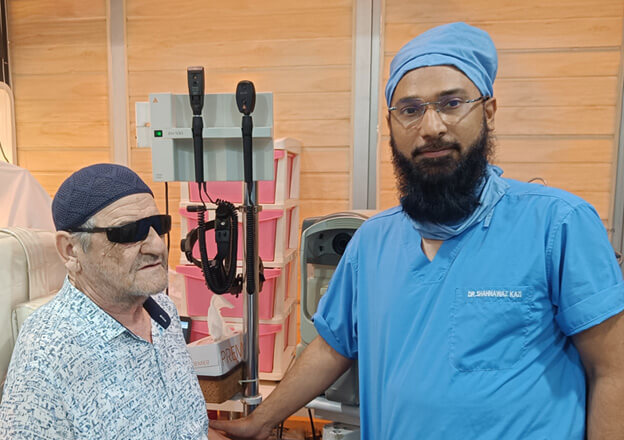
Conclusion
For the best oculoplasty treatment in Andheri, Mumbai, trust Ashu Laser Vision and Ashu Eye Hospital. We specialize in both cosmetic oculoplasty and functional eye surgery, offering a wide range of procedures to help you achieve optimal eye health and aesthetics. Whether you’re dealing with eyelid sagging, tear duct issues, orbital fractures, or simply looking to rejuvenate the area around your eyes, our team of experienced surgeons provides the highest quality care.
With over 16 years of expertise in oculoplastic surgery, Dr. Shahnawaz Kazi has successfully treated numerous patients with complex eye and eyelid conditions. His deep knowledge and experience in cosmetic and functional oculoplastic procedures have earned him a reputation as a leading oculoplastic specialist in Andheri, Mumbai. Dr. Kazi offers the best advanced treatments for conditions like eyelid rejuvenation, orbital fracture repair, tear duct surgery, and ptosis correction, ensuring optimal outcomes for his patients.
Patients trust Dr. Kazi for his compassionate approach and commitment to achieving natural-looking results that enhance both the aesthetics and functionality of the eyes. His success in providing personalized treatment plans, coupled with state-of-the-art surgical techniques, has consistently led to high patient satisfaction and remarkable recovery rates.
For those seeking expert care in oculoplastic surgery in Andheri, Mumbai, Dr. Shahnawaz Kazi’s clinic remains a trusted choice for restoring and enhancing the delicate features around the eyes.
Contact us today to schedule a consultation and discover how oculoplastic can enhance your eye health and appearance.
Book Your Consultation Today!
Ready to rejuvenate your eyes and boost your confidence? Contact Ashu Laser Vision & Ashu Eye Hospital, the best cosmetic oculoplasty clinic in Andheri West, Mumbai, India, and schedule your personalized consultation today.
FAQs About Oculoplasty (Oculoplastic Surgery)
Oculoplasty is a specialized branch of ophthalmology that focuses on the reconstructive and cosmetic surgery of the eyelids, tear ducts, orbit (eye socket), and surrounding facial areas. It treats both functional and aesthetic issues around the eyes.
An oculoplastic surgeon is an ophthalmologist with advanced training in plastic and reconstructive surgery of the eye and surrounding structures, including the eyelids, lacrimal system, and orbit.
Oculoplasty addresses conditions such as:
- Droopy eyelids (ptosis)
- Eyelid malpositions (entropion, ectropion)
- Eye tumors
- Tear duct blockage
- Eye injuries
- Eye bag removal and aesthetic eyelid rejuvenation
No. Oculoplasty includes both medical (reconstructive) and cosmetic procedures. It corrects vision-threatening conditions and improves facial aesthetics.
Blepharoplasty is a type of oculoplasty procedure that involves removing excess skin or fat from the eyelids. Oculoplasty, as a broader field, includes many other surgeries beyond blepharoplasty.
Cosmetic oculoplasty focuses on improving the appearance of the eyes and surrounding areas, including eyelid lifts, eye bag removal, fat transfer, and canthoplasty for eye reshaping.
- Upper and lower blepharoplasty
- Ptosis repair
- Tear duct surgery (DCR)
- Eyelid malposition correction
- Orbital fracture or tumor surgery
- Eye socket reconstruction
- Eyelid tumor removal
Ptosis surgery lifts the upper eyelid to correct drooping caused by muscle weakness or nerve dysfunction. It improves vision and appearance.
Dacryocystorhinostomy (DCR) is a tear duct surgery to treat blocked tear ducts. It creates a new drainage pathway between the eye and nose to relieve constant tearing.
Yes, oculoplastic procedures are safe and effective when performed by a trained oculoplastic surgeon. As with any surgery, risks exist but are generally low.
Most patients recover in 1 to 2 weeks, depending on the procedure. Swelling and bruising are common but temporary. Full healing may take several weeks.
Oculoplastic surgeries are typically performed under local anesthesia with sedation or general anesthesia, so patients feel little to no pain during the procedure. Mild discomfort may occur during recovery.
In most cases, incisions are placed in natural creases or inside the eyelid, resulting in minimal or invisible scarring.
You may be a good candidate if you have:
- Drooping or excess eyelid skin
- Puffy under-eye bags
- Tearing or blocked tear ducts
- Cosmetic concerns around the eyes
- Orbital trauma or tumors
The cost varies based on the type of procedure:
- Blepharoplasty: ₹30,000–₹80,000
- Ptosis surgery: ₹35,000–₹70,000
- DCR surgery: ₹25,000–₹60,000
- Tumor or trauma surgery: ₹60,000 and up
Reconstructive procedures (e.g., ptosis repair, DCR, tumor removal) are often covered by insurance. Cosmetic procedures, like aesthetic blepharoplasty, are typically not.
Yes, in cases where drooping eyelids or blocked tear ducts impair vision, oculoplasty can significantly restore or improve sight.
Most results are long-lasting, especially for functional surgeries. Cosmetic outcomes may last 5–10 years or more, depending on aging and lifestyle.
- Cosmetic oculoplasty enhances appearance
- Functional oculoplasty corrects medical issues like vision obstruction, tear drainage, or tumors
For expert care in Mumbai, Ashu Laser Vision & Ashu Eye Hospital in Andheri West offers comprehensive oculoplasty services, including both reconstructive and cosmetic procedures, led by experienced oculoplastic surgeons.

